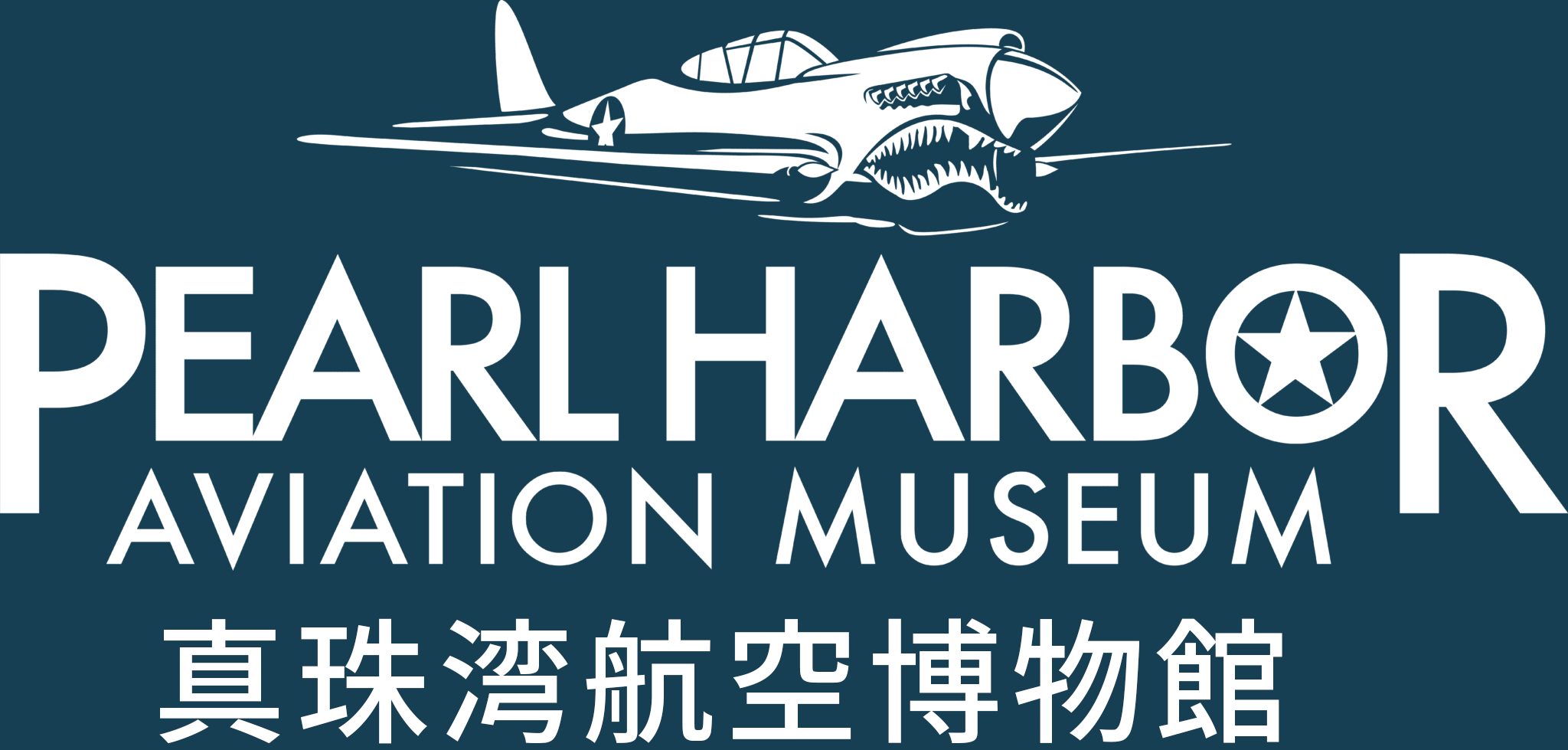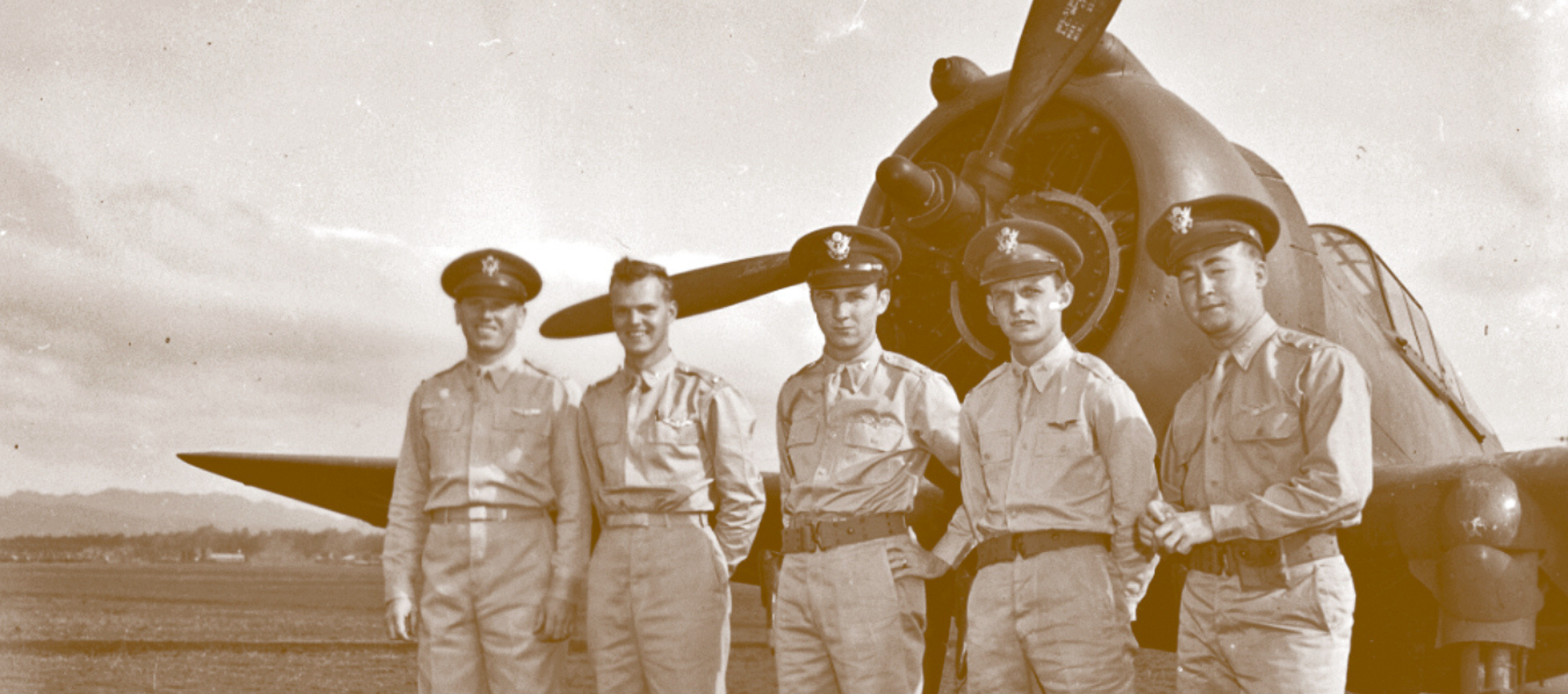Help keep the story of Harry Brown alive at Pearl Harbor Aviation Museum
Dearest Reader,
“Air Raid Pearl Harbor – this is not drill.”
This telegraphed message, stamped in our collective memory, shook our nation to its core. As Japan’s December 7th, 1941 aerial strike force steamed ever closer to Pearl Harbor, the U.S. Pacific Fleet was moored peacefully – never suspecting the sheer hell that the morning would bring.
For us and our family, it was – and is – personal. Hours earlier, on the evening of December 6th, our father, 2nd Lt. Harry Winston Brown, and his best friend and roommate, John Dains, attended an evening dinner dance with fellow Air Corps pilots in Honolulu. They were tuxedo-wearing pilots of the Army Air Corps, swinging to the tunes of Glenn Miller. The celebration capped a week of intensive aerial attack preparations and gunnery school. They partied like there was no tomorrow, and headed back to Wheeler Field to sleep it off at the Bachelor Officer’s Quarters.
At 7:55 AM, their lives, and our entire world, changed forever.
They were awakened by the noise of what they thought was just another drill. But this time, Pearl Harbor was under attack.
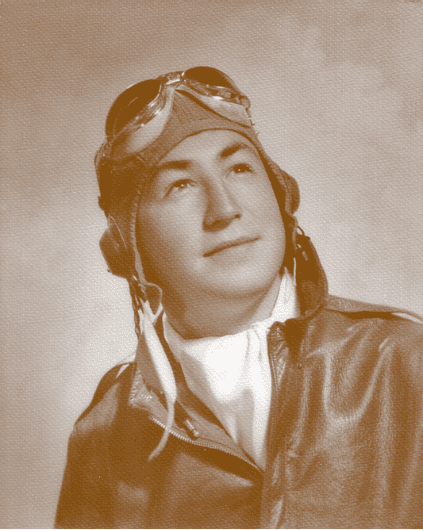 Pilot Harry W. Brown
Pilot Harry W. Brown
As sons of heroic pilot Harry W. Brown, we are writing to you today, because Pearl Harbor Aviation Museum needs your help to add an essential piece of Pearl Harbor history – a Japanese Aichi D3A Type 99 “Val” dive bomber – to its aviation battlefield exhibit. As one of the main aircraft used by the Japanese, the Val helps to tell the story of the attack on Pearl Harbor and that of the heroes who fought back on December 7, 1941 – heroes like our father.
Our father’s memory of that fateful day was clear. He and his friend, groggy from the celebration and still in their tuxedo pants and socks, remembered jumping into his car, a light blue Ford Crown Victoria Coupe purchased before heading to Hawaii, “like most graduating cadets, with the first money they ever had in their life.” Finding Wheeler Field shot up and inoperable, they headed to Haleiwa. Adrenaline pumping, our father recalled running through the starting procedures for his P-36 Hawk. He was one of five pilots to get airborne on December 7th, scoring victories during the attack on Pearl Harbor. Our father, only 20 years old at the time, shot down two Japanese Val dive bombers on December 7, 1941. Here are his own words about what happened that day:
“When the first Val went into his run to lay his first bomb, we thought it was the Navy. We heard the explosion, and thought that he’d clobbered himself, so we sort of ambled out to watch them tidy up the mess. When we looked outside, of course the sky was literally alive with Japanese airplanes.” – Pilot Harry Brown
We were at war. For our father and all those serving at the time, life would never be the same. During that second wave our father and four others – George Welch, Kenneth Taylor, Philip Rasmussen and Lewis Sanders – collectively shot down 12 enemy aircraft.
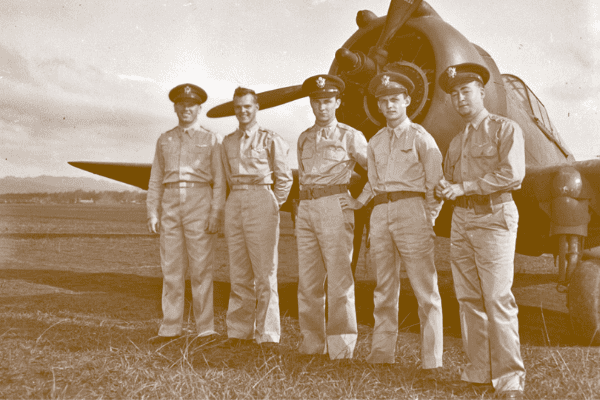 USAAF fighter pilots with at least one kill during Pearl Harbor attack posing before a P-36 Hawk fighter (from left):
LT Lewis Sanders, 2LT Philip Rasmussen, 2LT Kenneth Taylor, 2LT George Welch, 2LT Harry Brown.
USAAF fighter pilots with at least one kill during Pearl Harbor attack posing before a P-36 Hawk fighter (from left):
LT Lewis Sanders, 2LT Philip Rasmussen, 2LT Kenneth Taylor, 2LT George Welch, 2LT Harry Brown.
“We headed from Wheeler to Haleiwa. We drove 11 miles in something like 10 minutes, which is no real exciting feat, except it’s over a very narrow winding road and a Japanese airplane had picked up the bright blue color of my car which was pretty visible from the air. Maybe we looked important to him. We were sure as hell going as fast as we could. A Val buzzed around and shot up a couple of airplanes and set them on fire, and then went off somewhere. Welch and Taylor had taken off in Curtiss P-40 Warhawks, and while this guy was shooting up the field we loaded a P-36 and I got airborne.” – Pilot Harry Brown
History, shared by museums, historical records, and the stories of those who lived through it, helps us remember, honor and ultimately pass on the lessons of our past. With your support, for the first time anywhere in our country, three of the Japanese aircraft types used in that Pearl Harbor attack will be on display in one location – the Pearl Harbor Aviation Museum. Imagine, a special exhibit featuring attacking and defending aircraft displayed inside an authentic World War II hangar that withstood the 1941 attack.
Will you help us achieve this vision?
Today, visitors to Pearl Harbor Aviation Museum can see a P-40, one of America’s lethal defending aircraft, and two of the three attacking Japanese aircraft, providing a glimpse into Japan’s strategy and tactics to control the Pacific. Japanese Zeros provided cover for Val dive bombers and Nakajima B5N “Kate” torpedo bombers executing bombing runs at the outset of the first wave. The strafing runs added to the chaos experienced by those defending Pearl Harbor from ship decks and the shipyard. The Kate torpedo bombers demonstrated Japanese engineering, dropping torpedoes modified to be deadly in the shallow waters of Pearl Harbor. The Vals sank more allied tonnage than any other Axis aircraft during WWII. The Zero, Kate and Val combined sank or badly damaged 16 ships of the Pacific Fleet on December 7, 1941.
Our father’s story does not end at Pearl Harbor. In August 1942 he was assigned to the 9th Squadron, 49th Fighter Group based in Australia flying P-40s and then P-38 Lightnings. There, in March 1943, he scored a victory in his P-38, shooting down a Nakajima Ki-43 Hayabusa “Oscar” fighter over Lae-Finschhafen, Papua New Guinea during the Battle of the Bismarck Sea. When the 475th Fighter Group “Satan’s Angels” formed, our father, then a Captain, was assigned to the 431st Fighter Squadron as a flight leader. Flying the Lockheed P-38 Lightning over Papua New Guinea, he scored the Group’s first three victories, downing three Zeros over the Watut River. He later achieved his final victory shooting down a Zero over Rabaul. He was the first ace of the 475th, which would soon boast three of America’s top five aces in the Pacific.
We are asking you to help keep our father’s story alive.
 Val goes down in flames over Pearl Harbor.
Val goes down in flames over Pearl Harbor.
 Aichi D3A Val dive bombers on the attack.
Aichi D3A Val dive bombers on the attack.
Please make a gift today to help Pearl Harbor Aviation Museum acquire a Japanese Val, to create a one-of-a-kind exhibit sharing the battle, the impact of the attack on Pearl Harbor, and the amazing courage of those who instinctively flew into action to defend each other, Pearl Harbor and our country. This is America’s WWII aviation battlefield – please help us share the story!
Thank you for your support,

Bryan W. Brown Forrest G. Brown
Sons of WWII American Ace Harry Brown
We need your help today to add a rare World War II Japanese Aichi D3A “Val” dive bomber to Pearl Harbor Aviation Museum’s December 7, 1941 aviation battlefield exhibit.
I want to donate
Give to help us acquire a Aichi D3A “Val” Dive Bomber.
One-Time Monthly Quarterly Annually